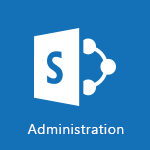SharePoint (Modern Sites) - The manager role Video
In this video, you will learn about the role of managers in the adoption of Microsoft 365. The video discusses the importance of managers in promoting and facilitating the use of collaborative tools and new ways of working.
It explores how managers can successfully navigate digital transformation and highlights the key benefits of Microsoft 365. This training will help you understand the significance of managers in driving adoption and provide insights on how to support and guide them in this process.
By the end of the video, you will have a clear understanding of the manager's role in the adoption of Microsoft 365 and how to leverage their influence to achieve successful implementation.
This knowledge will enable you to effectively promote and support the use of Microsoft 365 within your organization.
- 2:41
- 2185 views
-
Outlook - Make your Outlook signature accessible
- 0:44
- Viewed 2836 times
-
Word - Check Accessibility in Word
- 1:42
- Viewed 2520 times
-
Word - Focus on priorities with the Immersive Reader
- 1:13
- Viewed 2457 times
-
Word - Accessibility in Word
- 2:29
- Viewed 2544 times
-
Outlook - Add accessible tables and lists
- 0:49
- Viewed 2427 times
-
Office 365 - How do I get help with accessibility?
- 0:41
- Viewed 2427 times
-
Office 365 - Use accessible templates in Office 365
- 1:30
- Viewed 2653 times
-
PowerPoint - Check Accessibility in PowerPoint
- 1:40
- Viewed 2740 times
-
Activate the features of Teams Premium
- 3:48
- Viewed 13088 times
-
Conduct outstanding webinars with Teams Premium
- 2:37
- Viewed 5646 times
-
Create a subsite
- 1:47
- Viewed 3094 times
-
Create a site collection
- 3:16
- Viewed 2962 times
-
Viva Connections for your colleague
- 0:30
- Viewed 2601 times
-
The admin role
- 1:59
- Viewed 2596 times
-
Optimize meeting management with meeting templates
- 1:31
- Viewed 2538 times
-
Create a communication site
- 0:50
- Viewed 2335 times
-
Optimize Teams Premium settings in Administration
- 1:27
- Viewed 2325 times
-
Boost meetings with the advanced features of Teams Premium
- 1:18
- Viewed 2316 times
-
What are virtual appointments in Teams Premium?
- 2:39
- Viewed 2312 times
-
Create a new page on a site
- 3:13
- Viewed 2289 times
-
Delete and restaure a site or subsite
- 1:21
- Viewed 2281 times
-
Set your navigation on your site
- 3:16
- Viewed 2227 times
-
Deploy your Viva Connections
- 2:22
- Viewed 2115 times
-
Modify and set the authorisations for a list or a library
- 2:46
- Viewed 2083 times
-
Add an app
- 2:40
- Viewed 2082 times
-
Set up your navigation
- 0:53
- Viewed 2038 times
-
Define a parent site
- 1:04
- Viewed 1559 times
-
Access the admin center
- 0:52
- Viewed 1129 times
-
Configure the global Theme and logo
- 2:26
- Viewed 1121 times
-
Prevent comments on modern pages
- 1:15
- Viewed 1093 times
-
Set the proper time zone
- 0:44
- Viewed 1048 times
-
Create a SharePoint site
- 1:57
- Viewed 1027 times
-
Disable site creation
- 0:52
- Viewed 1015 times
-
Apply a Specific Policy to a User
- 1:22
- Viewed 992 times
-
Create a permission group
- 2:11
- Viewed 974 times
-
Define site storage limits
- 1:42
- Viewed 896 times
-
Disable the OneDrive sync button
- 0:49
- Viewed 873 times
-
Managing permissions on a SharePoint page
- 1:27
- Viewed 870 times
-
Choose expiration and permissions options for links opened to anyone
- 1:08
- Viewed 842 times
-
Delete a SharePoint site
- 1:12
- Viewed 829 times
-
Disable subsite creation
- 0:53
- Viewed 824 times
-
Modify membership to the sites of my organization
- 1:38
- Viewed 801 times
-
Managing permissions in a SharePoint folder
- 1:10
- Viewed 800 times
-
Managing permissions of a document library
- 2:01
- Viewed 759 times
-
Managing permissions on a SharePoint file
- 1:12
- Viewed 758 times
-
Managing permissions on a SharePoint List
- 1:42
- Viewed 758 times
-
SharePoint permission levels
- 2:16
- Viewed 735 times
-
Recover deleted items
- 01:09
- Viewed 213 times
-
Grant delegate access in Microsoft 365 administration
- 01:23
- Viewed 207 times
-
Add a third-party application
- 02:40
- Viewed 139 times
-
Mailbox Delegation Setup
- 01:59
- Viewed 117 times
-
Provide an overview of best security practices in Outlook
- 01:08
- Viewed 90 times
-
Introduction to PowerBI
- 00:60
- Viewed 29 times
-
Introduction to Microsoft Outlook
- 01:09
- Viewed 33 times
-
Introduction to Microsoft Insights
- 02:04
- Viewed 35 times
-
Introduction to Microsoft Viva
- 01:22
- Viewed 35 times
-
Introduction to Planner
- 00:56
- Viewed 38 times
-
Introduction to Microsoft Visio
- 02:07
- Viewed 28 times
-
Introduction to Microsoft Forms
- 00:52
- Viewed 40 times
-
Introducing to Microsoft Designer
- 00:28
- Viewed 39 times
-
Introduction to Sway
- 01:53
- Viewed 23 times
-
Introducing to Word
- 01:00
- Viewed 38 times
-
Introducing to SharePoint Premium
- 00:47
- Viewed 31 times
-
Create a call group
- 01:15
- Viewed 26 times
-
Use call delegation
- 01:07
- Viewed 20 times
-
Assign a delegate for your calls
- 01:08
- Viewed 27 times
-
Ring multiple devices simultaneously
- 01:36
- Viewed 31 times
-
Use the "Do Not Disturb" function for calls
- 01:28
- Viewed 19 times
-
Manage advanced call notifications
- 01:29
- Viewed 23 times
-
Configure audio settings for better sound quality
- 02:08
- Viewed 37 times
-
Block unwanted calls
- 01:24
- Viewed 27 times
-
Disable all call forwarding
- 01:09
- Viewed 24 times
-
Manage a call group in Teams
- 02:01
- Viewed 27 times
-
Update voicemail forwarding settings
- 01:21
- Viewed 20 times
-
Configure call forwarding to internal numbers
- 01:02
- Viewed 22 times
-
Set call forwarding to external numbers
- 01:03
- Viewed 24 times
-
Manage voicemail messages
- 01:55
- Viewed 22 times
-
Access voicemail via mobile and PC
- 02:03
- Viewed 21 times
-
Customize your voicemail greeting
- 02:17
- Viewed 23 times
-
Transfer calls with or without an announcement
- 01:38
- Viewed 18 times
-
Manage simultaneous calls
- 01:52
- Viewed 26 times
-
Support third-party apps during calls
- 01:53
- Viewed 34 times
-
Add participants quickly and securely
- 01:37
- Viewed 21 times
-
Configure call privacy and security settings
- 02:51
- Viewed 25 times
-
Manage calls on hold
- 01:20
- Viewed 24 times
-
Live transcription and generate summaries via AI
- 03:43
- Viewed 23 times
-
Use the interface to make and receive calls
- 01:21
- Viewed 23 times
-
Action Function
- 04:18
- Viewed 58 times
-
Search Function
- 03:42
- Viewed 85 times
-
Date and Time Function
- 02:53
- Viewed 69 times
-
Logical Function
- 03:14
- Viewed 110 times
-
Text Function
- 03:25
- Viewed 94 times
-
Basic Function
- 02:35
- Viewed 60 times
-
Categories of Functions in Power FX
- 01:51
- Viewed 91 times
-
Introduction to Power Fx
- 01:09
- Viewed 63 times
-
The New Calendar
- 03:14
- Viewed 124 times
-
Sections
- 02:34
- Viewed 75 times
-
Customizing Views
- 03:25
- Viewed 68 times
-
Introduction to the New Features of Microsoft Teams
- 00:47
- Viewed 122 times
-
Guide to Using the Microsoft Authenticator App
- 01:47
- Viewed 85 times
-
Turn on Multi-Factor Authentication in the Admin Section
- 02:07
- Viewed 69 times
-
Concept of Multi-Factor Authentication
- 01:51
- Viewed 87 times
-
Retrieve Data from a Web Page and Include it in Excel
- 04:35
- Viewed 270 times
-
Create a Desktop Flow with Power Automate from a Template
- 03:12
- Viewed 194 times
-
Understand the Specifics and Requirements of Desktop Flows
- 02:44
- Viewed 109 times
-
Dropbox: Create a SAS Exchange Between SharePoint and Another Storage Service
- 03:34
- Viewed 208 times
-
Excel: List Files from a Channel in an Excel Workbook with Power Automate
- 04:51
- Viewed 127 times
-
Excel: Link Excel Scripts and Power Automate Flows
- 03:22
- Viewed 121 times
-
SharePoint: Link Microsoft Forms and Lists in a Power Automate Flow
- 04:43
- Viewed 300 times
-
SharePoint: Automate File Movement to an Archive Library
- 05:20
- Viewed 108 times
-
Share Power Automate Flows
- 02:20
- Viewed 100 times
-
Manipulate Dynamic Content with Power FX
- 03:59
- Viewed 108 times
-
Leverage Variables with Power FX in Power Automate
- 03:28
- Viewed 101 times
-
Understand the Concept of Variables and Loops in Power Automate
- 03:55
- Viewed 108 times
-
Add Conditional “Switch” Actions in Power Automate
- 03:58
- Viewed 136 times
-
Add Conditional “IF” Actions in Power Automate
- 03:06
- Viewed 90 times
-
Create an Approval Flow with Power Automate
- 03:10
- Viewed 212 times
-
Create a Scheduled Flow with Power Automate
- 01:29
- Viewed 420 times
-
Create an Instant Flow with Power Automate
- 02:18
- Viewed 186 times
-
Create an Automated Flow with Power Automate
- 03:28
- Viewed 186 times
-
Create a Simple Flow with AI Copilot
- 04:31
- Viewed 162 times
-
Create a Flow Based on a Template with Power Automate
- 03:20
- Viewed 128 times
-
Discover the “Build Space”
- 02:26
- Viewed 98 times
-
The Power Automate Mobile App
- 01:39
- Viewed 99 times
-
Familiarize Yourself with the Different Types of Flows
- 01:37
- Viewed 107 times
-
Understand the Steps to Create a Power Automate Flow
- 01:51
- Viewed 136 times
-
Discover the Power Automate Home Interface
- 02:51
- Viewed 96 times
-
Access Power Automate for the Web
- 01:25
- Viewed 136 times
-
Understand the Benefits of Power Automate
- 01:30
- Viewed 143 times
-
Add a third-party application
- 02:40
- Viewed 139 times
-
Send a survey or questionnaire by email
- 02:06
- Viewed 174 times
-
Collaborate directly during an event with Microsoft Loop and Outlook
- 02:01
- Viewed 139 times
-
Create a collaborative email with Microsoft Loop and Outlook
- 02:30
- Viewed 132 times
-
Streamline Note-Taking with OneNote and Outlook
- 01:03
- Viewed 112 times
-
Create your reservation page for appointment booking (Bookings)
- 03:17
- Viewed 177 times
-
Share a document securely with Outlook
- 02:21
- Viewed 114 times
-
Block a sender
- 01:54
- Viewed 153 times
-
Identify a fraudulent email
- 02:06
- Viewed 110 times
-
Prevent transfer for a meeting
- 01:19
- Viewed 120 times
-
Prevent the forwarding of an email
- 01:01
- Viewed 131 times
-
Protect an email by encrypting
- 01:10
- Viewed 114 times
-
Provide an overview of best security practices in Outlook
- 01:08
- Viewed 90 times
-
Recover deleted items
- 01:09
- Viewed 213 times
-
Recall or replace an e-mail message
- 01:45
- Viewed 133 times
-
Respond to invitations as a delegate
- 02:55
- Viewed 100 times
-
Use a Shared Mailbox
- 01:18
- Viewed 143 times
-
Create and Manage Appointments in Delegated Calendars
- 02:04
- Viewed 110 times
-
Send Emails on Behalf of Someone Else
- 01:13
- Viewed 148 times
-
Mailbox Delegation Setup
- 01:59
- Viewed 117 times
-
Calendar Delegation Setup
- 01:21
- Viewed 124 times
-
Grant delegate access in Microsoft 365 administration
- 01:23
- Viewed 207 times
-
Use the Meeting Dashboard
- 02:48
- Viewed 220 times
-
Respond to a Meeting Poll
- 01:30
- Viewed 152 times
-
Create a Meeting Poll
- 02:48
- Viewed 164 times
-
Display Three Time Zones
- 01:52
- Viewed 107 times
-
View Other Calendars
- 00:50
- Viewed 122 times
-
Open a Shared Calendar
- 01:29
- Viewed 129 times
-
Share Your Calendar
- 01:54
- Viewed 131 times
-
Use the Scheduling Assistant
- 01:42
- Viewed 123 times
-
Use the Immersive Reader Feature
- 01:33
- Viewed 115 times
-
Dictate Your Email to Outlook
- 01:35
- Viewed 115 times
-
Translate Emails in Outlook
- 01:32
- Viewed 121 times
-
Make Your Outlook Signature Accessible
- 01:12
- Viewed 131 times
-
Add Accessible Tables and Lists
- 02:32
- Viewed 155 times
-
Improve the Accessibility of Images in Emails
- 01:18
- Viewed 118 times
-
Improve Email Accessibility
- 02:02
- Viewed 119 times
-
Send Automatic Out-of-Office Replies
- 02:22
- Viewed 125 times
-
Prepare for Time Out of Office (Viva Insights)
- 02:08
- Viewed 132 times
-
Respect Your Colleagues' Off Hours (Viva Insights)
- 01:27
- Viewed 98 times
-
Delay Email Delivery
- 01:10
- Viewed 128 times
-
Use Conversation View
- 01:47
- Viewed 119 times
-
Clean Up Your Inbox
- 01:18
- Viewed 131 times
-
Organize Your Messages with Rules
- 02:01
- Viewed 410 times
-
Use Categories
- 02:51
- Viewed 113 times
-
Easily Sort Your Mails
- 01:38
- Viewed 107 times
-
Automate Routine Actions
- 02:19
- Viewed 120 times
-
Create an Email Template
- 01:40
- Viewed 144 times
-
Create a task from a message
- 02:00
- Viewed 171 times
-
Share a task list
- 03:10
- Viewed 175 times
-
Create a task or reminder
- 01:50
- Viewed 185 times
-
Task Module Overview
- 01:56
- Viewed 295 times
-
Manage Teams online meeting options
- 01:56
- Viewed 175 times
-
Edit or delete an appointment, meeting or event
- 01:50
- Viewed 303 times
-
Create a reminder for yourself
- 01:59
- Viewed 191 times
-
Respond to a meeting
- 01:00
- Viewed 174 times
-
Create an appointment or meeting
- 01:44
- Viewed 189 times
-
Create different types of events
- 01:46
- Viewed 206 times
-
Edit and customize views
- 01:55
- Viewed 190 times
-
Presentation and introduction to the calendar
- 01:35
- Viewed 203 times
-
Search options
- 01:23
- Viewed 164 times
-
Sort and filter emails
- 02:51
- Viewed 188 times
-
Request a Read Receipt or Delivery Confirmation
- 02:01
- Viewed 274 times
-
The Bcc Field in Detail
- 01:53
- Viewed 207 times
-
Save and Print a Message
- 01:48
- Viewed 197 times
-
Insert Elements in Emails (Tables, Charts, Images)
- 02:49
- Viewed 255 times
-
Attach files efficiently in Outlook
- 02:20
- Viewed 182 times
-
Process an incoming message
- 01:53
- Viewed 183 times
-
Send an Email and Create a Draft in Outlook
- 03:10
- Viewed 238 times
-
Organize into Folders
- 01:57
- Viewed 185 times
-
Set Your Work Hours in Outlook
- 02:02
- Viewed 209 times
-
Create and add a signature to messages
- 01:26
- Viewed 201 times
-
Manage new message notifications
- 01:40
- Viewed 180 times
-
Change the default font of your emails
- 01:05
- Viewed 177 times
-
Manage Views
- 02:36
- Viewed 154 times
-
Add and manage multiple accounts on Outlook
- 01:24
- Viewed 230 times
-
Explore the Interface
- 03:22
- Viewed 176 times
-
Introduce the new version of Outlook
- 02:01
- Viewed 176 times




